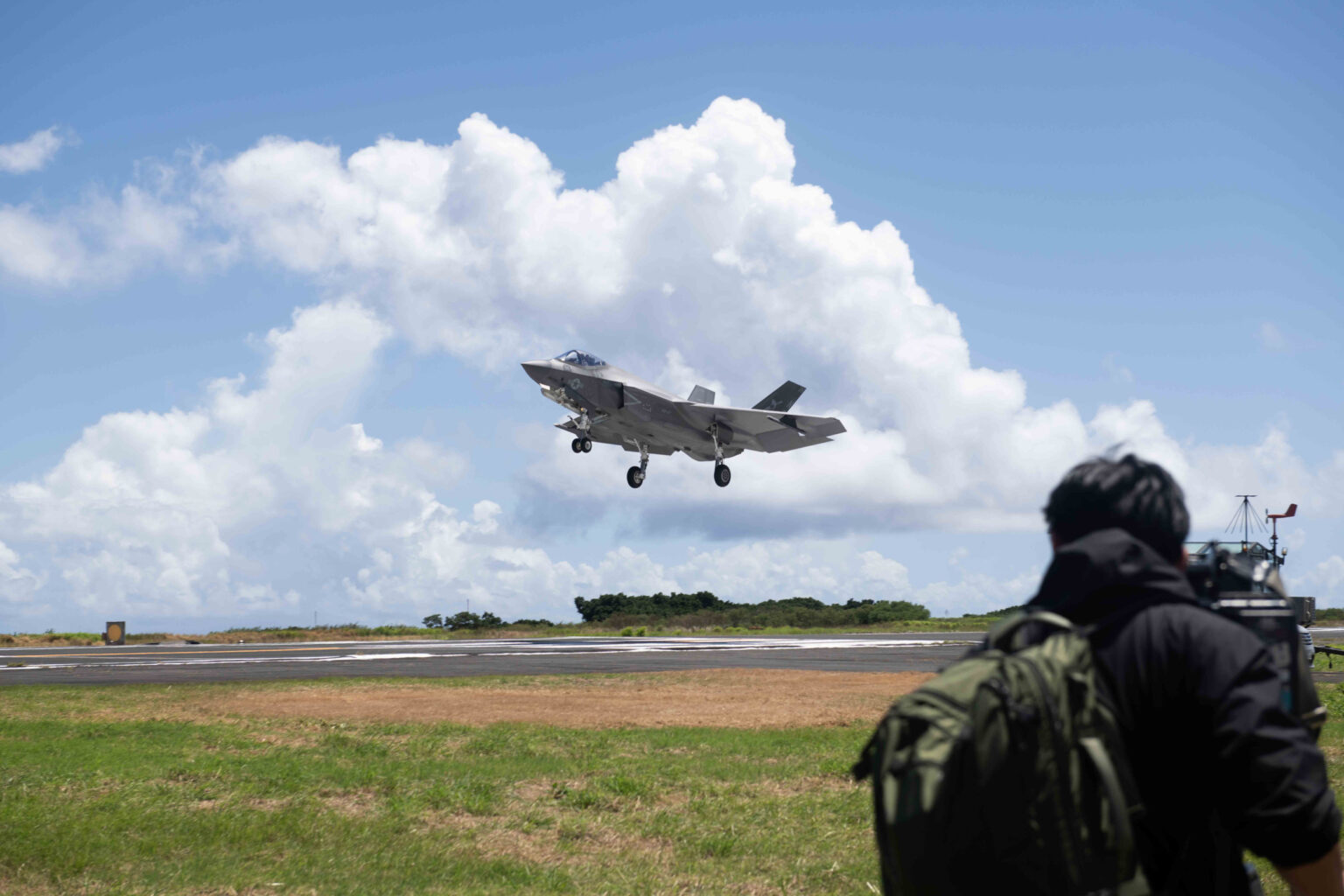The United States nuclear-powered aircraft carrier USS George Washington—homeported in Japan—continues its preparations for an upcoming patrol in the western Pacific Ocean.
Lieutenant Commander Mark Langford, the George Washington‘s public affairs officer, told Newsweek that the aircraft carrier was “focused on ensuring that the U.S. military remains the world’s most combat-credible fighting force capable of maintaining peace through strength.”
Why It Matters
The George Washington is one of the American naval vessels forward-deployed in Japan—a major treaty ally of the U.S. in Northeast Asia. It returned to its home port at Yokosuka naval base near Tokyo in November following 2,117 days of maintenance in Virginia.
The 100,000-ton warship left Yokosuka naval base earlier this week, while its naval aviators were conducting field carrier landing practice on a Japanese island in the Pacific Ocean, simulating landings on the George Washington‘s flight deck to obtain landing qualifications.
While the George Washington and its aviation unit prepared for patrol, the Chinese navy—the world’s largest by hull count, with more than 370 vessels—deployed the aircraft carriers CNS Liaoning and CNS Shandong to the Philippine Sea and the South China Sea, respectively.
What To Know
The George Washington conducted consolidated cargo and fueling-at-sea operations with the chartered tanker Badlands Trader on Wednesday at an undisclosed location in waters south of Yokosuka, according to photos released by the U.S. Navy’s Military Sealift Command.
Check out these images. @MSCSealift chartered ship Motor Tanker Badlands Trader (T-AOT 5582) conducted consolidated cargo operations (CONSOL) with @GW_CVN73 May 28 at sea south of Yokosuka, Japan. 🚢⛽💪 pic.twitter.com/TW13PItjk8
— U.S. Navy’s Military Sealift Command (@MSCSealift) May 29, 2025
The aircraft carrier was underway conducting routine operations in the U.S. Seventh Fleet’s area of operations in support of “a free and open Indo-Pacific,” Langford said. Both the western Pacific Ocean and the Indian Ocean are the Seventh Fleet’s operating area.
Official photos also show that the Carrier Air Wing 5—attached to the George Washington—conducted field carrier landing practice at Iwo To, a Japanese island 750 miles south of Tokyo. The training began on May 19 and is scheduled to end on Saturday.
Participating carrier-based fixed-wing aircraft included the F-35C and F/A-18E/F fighter jets, the EA-18G electronic warfare aircraft, and the E-2D airborne command and control aircraft. Pilots performed repetitive “touch and go” landings during the training on the small island.
“[This is the training] that is required for Air Wing 5 air crews to get ready to go to sea,” said Captain William Fallon, the assistant chief of staff for Commander, U.S. Naval Forces Japan/Navy Region Japan, adding that the island provided a realistic practice environment.
5月19日から硫黄島で行われている、固定翼の空母艦載機の陸上模擬着艦訓練(FCLP)🛫 この子はF-35CライトニングII pic.twitter.com/4W362ROqLr
— 在日米海軍司令部 (@CNFJ) May 29, 2025
The George Washington‘s carrier air wing is also known as the “air wing of the future,” said Langford, referring to the inclusion of the fifth-generation F-35C fighter aircraft, which features “advanced stealth technology” and provides “unmatched lethality and survivability.”
What People Are Saying
The U.S. Naval Forces Japan/Navy Region Japan said on Friday: “[Field carrier landing practice] is a required flight training for pilot qualification and proficiency that precedes aircraft carrier landing operations, ensuring warfighting readiness in support of regional security and stability in the U.S. Indo-Pacific region.”
The U.S. Navy said of the USS George Washington‘s return to Japan: “George Washington is Seventh Fleet’s premiere forward-deployed aircraft carrier, a long-standing symbol of the United States’ commitment to maintaining a free and open Indo-Pacific region, and operates alongside allies and partners across the U.S. Navy’s largest numbered fleet.”
What Happens Next
It was not immediately clear when the George Washington would begin its first patrol after returning to Japan seven months ago. It also remains to be seen whether it will conduct joint operations with its sister ship, the USS Nimitz, which is in the South China Sea.
Read the full article here

